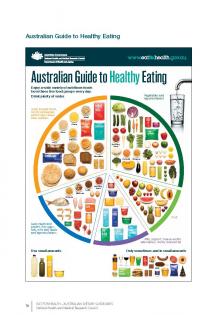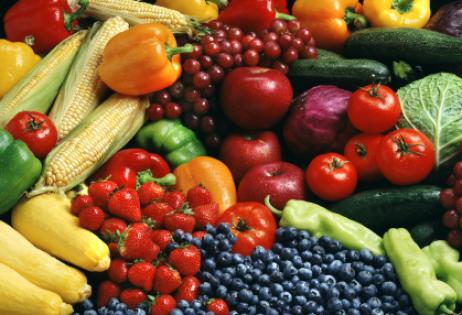Australia’s peak body for support of medical research, the National Health and Medical Research Council, yesterday released new Australian Dietary Guidelines and Infant Feeding Guidelines that have been widely welcomed by relevant advocacy groups.
The guidelines were developed after a review of around 55,000 scientific publications that show the relationship between diet and health is even stronger today.
“The evidence that links a healthy diet and reducing the risk of chronic health problems such as heart disease, Type 2 diabetes, obesity and some cancers is stronger,” said the CEO of NHMRC, Professor Warwick Anderson.
“There is also stronger evidence about the kind of foods that can increase the risk of weight gain and health problems.”
Professor Anderson said that it is not too strong a term to say that Australia is facing an “obesity epidemic”. NHMRC estimates that 60% of adults and 25% of children are now overweight or obese and that if current trends continue, 83% of men and 75% of women aged over 20 years will be overweight or obese. The cost to the community of obesity alone was more than $8 billion five years ago.
“The scientific evidence suggests that one of the contributing issues is the replacement of healthy, nutritious food with energy dense food with minimal nutritional value.
“To achieve and maintain a healthy weight, Australians need to balance physical activity with amounts of nutritious food and drinks that meet energy needs. We all need to limit energy rich but nutrient poor ‘junk foods’ that are high in saturated fate, added salt of sugar,” Professor Anderson said.
The NHMRC says that even a small change in dietary behavior can produce significant health improvements, with a 5kg weight loss by all people who are overweight or obese reducing the national prevalence of type 2 diabetes by 15%.
A host of health and nutrition advocacy groups have endorsed the new guidelines including the National Heart Foundation, the Public Health Association of Australia, the Accredited Practising Dietitians and some food-specific organisations.
What we need to eat more of:
- Vegetables and legumes/beans
- Fruits
- Whole grain cereal foods such as wholegrain breakfast cereals and wholemeal bread
- Milk, yoghurt, cheese – preferably reduced fat (except for children under 2 years)
- Fish, seafood, poultry, eggs, nuts, seeds, legumes/beans
- Red meat (young women only)
Special note: the big one here is nuts! We need to increase our nut consumption by a whopping 350% to meet the recommended daily intake. Nuts for Life says we all went off nuts because of our “obsession with no fat” but the new Guidelines are very clear that low fat is more appropriate than no fat.
The National Heart Foundation says they’re pleased that the Guidelines recognise that there are “good fats”.
What we need to eat less of:
- Refined grain cereal foods such as white bread and low fibre cereals
- High and medium fat milk, yoghurt and cheese
- Red meats (adult males only)
- Energy-dense and/or nutrient-poor food and drinks which are high in saturated fat, added sugars, added salt and/or alcohol such as sugar sweetened drinks, fried foods, hot chips, many take-away foods, cakes, biscuits, chocolate, confectionery and crisps.
The guidelines at a glance:
1. Be physically active and choose amounts of nutritious food and drinks to meet your energy needs. Children and adolescents should eat sufficiently to grow and develop normally and be physically active every day. Adults should eat nutritious foods and keep physically active to help maintain muscle strength and healthy weight.
2. Enjoy foods from five groups every day
- vegetables
- fruit
- wholegrain foods
- lean meats, poultry, fish, eggs, tofu, nuts, seeds and legumes/beans
- reduced fat milk, yoghurt and cheese
- And drink plenty of water.
3. Limit intake of food that contain saturated fat, added salt, added sugars and alcohol.
4. Encourage, support and promote breastfeeding.
5. Care for food by preparing and storing it safely.
An infographic of the five recommended food groups is below. You can find further information, including a copy of the Guidelines at eatforhealth.gov.au









 Agree (0)
Agree (0) Disagree (
Disagree (











__small.png)










